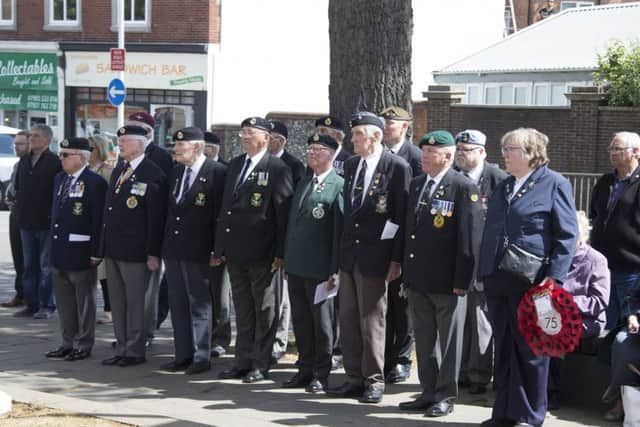D-Day heroes remembered at Worthing War Memorial service


Veterans, dignitaries and members of the public attended a memorial service led by one of the mayor’s chaplains, before Worthing mayor Hazel Thorpe laid wreaths to commemorate the fallen.
Councillor Tom Wye, who has been a driving force behind remembering veterans in Worthing, read the names and eulogies of two Worthing men who died in the 1944 invasion, before crosses were placed at the foot of the memorial.
Advertisement
Hide AdAdvertisement
Hide Ad“It is absolutely right that we remember those who made the ultimate sacrifice,” he said.


“Today, of all days, we say thank you to all of those 160,000 men.”
Mr Wye then led a round of applause directed at Worthing D-Day veteral John Sandles, 92, who was attending the service.
Mr Sandles was aboard a ship during the invasion that searched for depth charges and German U-boats.
Advertisement
Hide AdAdvertisement
Hide AdHe said his D-Day reached a surprising conclusion when he went below deck during the operation to make himself a cup of tea.


A violent movement of the boat spilled the recently boiled kettle all over his face and body, sending him into shock and agony.
With the operation ongoing, he was forced to stay aboard for treatment as he was ‘just one life’, compared to the countless others that would be saved.
“My thing is, lest we forget the people that never came back,” he said.
Advertisement
Hide AdAdvertisement
Hide Ad“I’m very keen on this sort of thing, to be thankful that I got back.
“The service was wonderful, it’s what I love doing and what I stand for. A lot of these people are my friends – we must not forget.”
Mr Sandles, along with all D-Day veterans, was awarded the Legion of Honour from France, the equivalent to a knighthood.
A two-minute silence was held, book-ended by renditions of the Last Post, before the congregation sang the national anthem to draw the service to a close.
Advertisement
Hide AdAdvertisement
Hide AdThe allied D-Day invasion of France on June 6, 1944, marked a turning point in the Second World War as allied troops began to push back the axis powers across Europe.
Around 160,000 soldiers were involved in the operation, with more than 4,000 losing their lives.